In the heart of the Gargano, perched on the silent cliffs overlooking the Adriatic, lies a place where the boundary between earth and sky grows thin: the Sanctuary of Monte Sant’Angelo, one of the oldest Christian pilgrimage sites in Europe. It was born around a cave that, according to tradition, was consecrated not by human hands, but directly by the Archangel Michael.
We are in the province of Foggia, in Puglia’s most mystical land. Here, in 490 AD, the Archangel is said to have appeared for the first time. From that moment on, the cave became sacred, drawing pilgrims from all over the world.
Also called the “Celestial Basilica”, the Sanctuary of Monte Sant'Angelo was never consecrated by men: Michael himself declared it holy. Since 2011, it has been part of the UNESCO World Heritage serial site “The Longobards in Italy: Places of Power”, a recognition of its extraordinary historical and spiritual significance.

Why visit the church consecrated by an angel
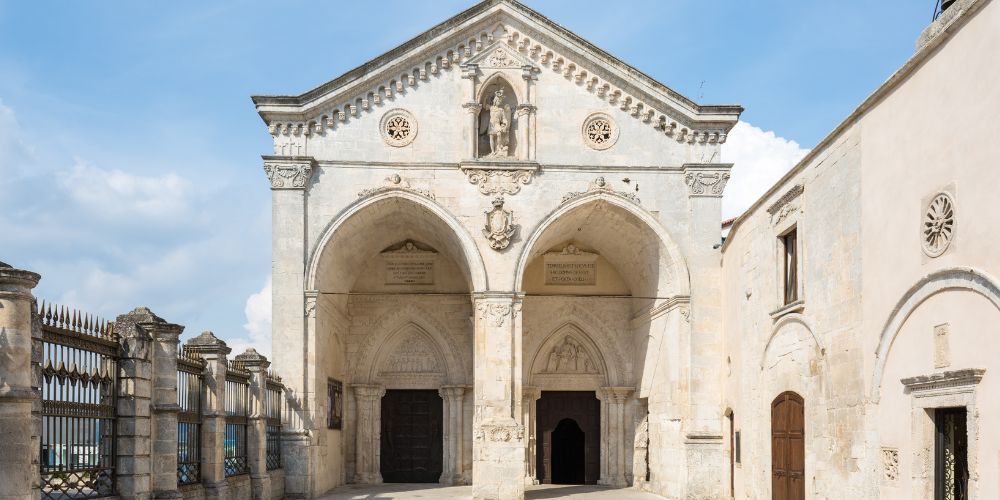
Visiting the Sanctuary of Monte Sant’Angelo means embarking on a journey into legend, history, and mystery. You don’t need to be a believer to feel the strength of this wonder carved into the rock: its atmosphere speaks to something deep within, even in the most secular hearts.
Its location makes the experience even more powerful. Standing at 800 meters above sea level, the sanctuary offers sweeping views over the Tavoliere delle Puglie and the Gulf of Manfredonia. The panorama itself amplifies the sense of majesty and silence that defines this place.
Throughout the year, the sanctuary welcomes pilgrims and visitors alike. Events such as the Feast of May 8, which commemorates the Archangel’s apparition, and extraordinary openings that unveil hidden corners, keep alive a devotion that has endured for centuries. Today, the sanctuary is both a symbol of the Gargano’s identity and one of the most important pilgrimage sites in Italy.
Its UNESCO designation has only strengthened its universal value, in a setting where every detail (from the echo of footsteps to the interplay of light and shadow in the cave) tells a thousand-year-old story.
The history of the Sanctuary of Monte Sant’Angelo: apparitions, legends, and power
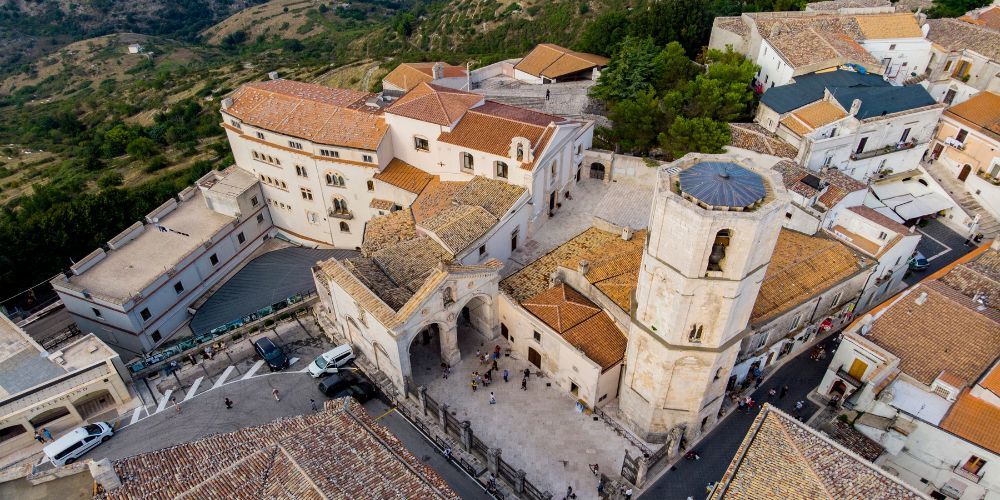
The foundation of the Sanctuary of Monte Sant'Angelo dates back to the 5th century, when Christianity was taking root over ancient pagan traditions. According to tradition, the Archangel Michael appeared in 490 AD to Bishop Lorenzo Maiorano, marking the beginning of a devotion that would change the Gargano forever.
The Liber de apparitione sancti Michaelis in Monte Gargano recounts three key episodes: the lost bull found inside the cave, the victory over pagan enemies thanks to Michael’s intervention, and the miraculous consecration of the cave in 493, said to have been performed by the Archangel himself.
Yet the sacredness of the site reaches even further back. Before the cult of Michael, the cave was already revered in Greco-Roman times, associated with deities such as Apollo and Calchas. Christianity did not erase this past but transformed it, infusing the ancient space with new meaning.
A turning point came in the 7th century, when the Lombards arrived. This Germanic people chose Michael as their patron saint and proclaimed the cave their national sanctuary. Under King Grimoald, who defeated the Byzantines, Monte Sant’Angelo became both a religious center and a symbol of power.
By the Middle Ages, its fame had spread across Europe. The sanctuary was considered one of the four great pilgrimage sites of Western Christianity, alongside Jerusalem, Rome, and Santiago de Compostela. Popes, kings, and saints all knelt here, at the place where heaven meets earth.
What to see in the Sanctuary of the Archangel Michael
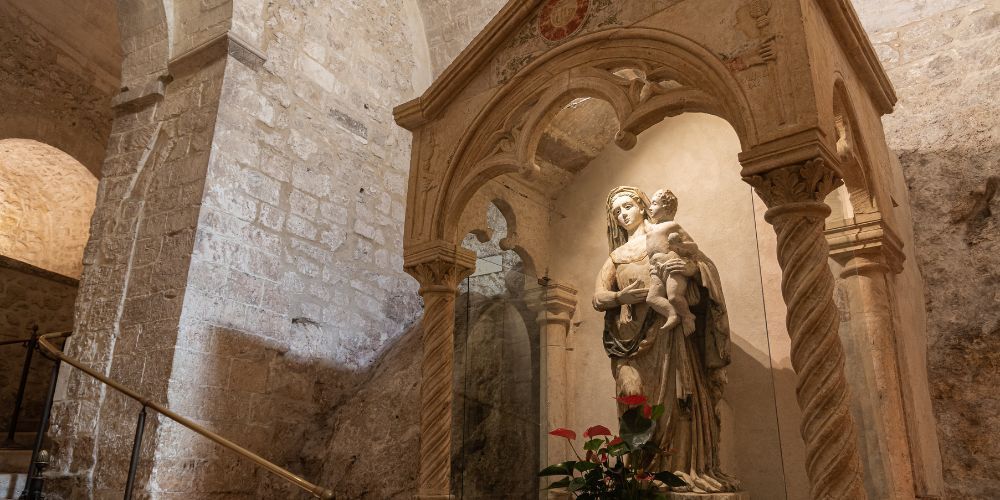
The visit begins in the upper basilica, where the Romanesque portal and the bell tower still bear witness to centuries of history. But the sanctuary’s true soul lies deeper.
Descending the Angevin staircase, you reach the sacred cave, the very site of the Archangel’s apparition. The rough rock walls, altars carved directly into the stone, statues veiled in half-light: everything here breathes an ancient, living spirituality.
On the rock, a timeless inscription reads: “Where the rock opens wide, the sins of men will be forgiven.”
A promise that continues to inspire pilgrims across the centuries.
Among the treasures of the cave is the Carrara marble statue of Saint Michael, sculpted in 1507 by Andrea Sansovino. Sword raised, eyes watchful, the Archangel seems to guard visitors as if he were truly present.
Nearby are the crypts and a devotional museum, displaying liturgical objects, ex-votos, and testimonies of faith, fragments of countless personal stories woven into the collective memory of the sanctuary.
What to visit in the village of Monte Sant'Angelo besides the Sanctuary
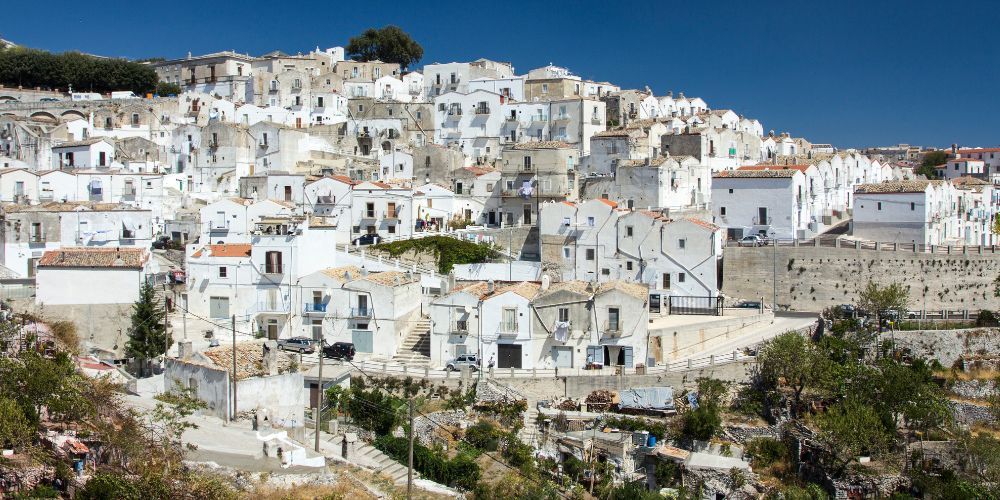
Monte Sant’Angelo is not just a sanctuary but also a millenary town, born and shaped around the miraculous cave. Its winding alleys, whitewashed houses, and ancient churches paint a vivid picture of history and identity.
One of its highlights is the San Pietro Complex, the town’s second pilgrimage site, which includes the Baptistery of San Giovanni in Tumba (also known as the Tomb of Rotari) and the Church of Santa Maria Maggiore, both steeped in silence and memory.
Just outside the town stands the Abbey of Santa Maria di Pulsano, founded in the 6th century on the site of a former pagan temple. Surrounded by 24 hermitages linked by steep paths and mule tracks, the abbey offers a unique experience of solitude and contemplation.
Dominating the skyline is the Norman-Swabian Castle, a fortress that has witnessed centuries of conquests and sieges. Visitors can still explore the stables, the ammunition depot, the inner courtyard, the Treasure Hall, and the castellans’ apartments, a glimpse into the medieval soul of the Gargano.
What is the Sanctuary of Monte Sant’Angelo?
The Sanctuary of Monte Sant’Angelo, perched on the Gargano promontory in Foggia, is one of the oldest and most fascinating Christian pilgrimage sites. Dedicated to the Archangel Michael, it was built around a cave where he is said to have appeared in the 5th century. It is also part of the Via Sacra Longobardorum, the medieval route that connected Northern Europe with the Holy Land, and is recognized as a UNESCO World Heritage Site.
Why is it dedicated to Saint Michael the Archangel?
According to legend, between the 5th and 6th centuries the Archangel chose this cave to manifest himself, consecrating it personally without human intervention. The Lombards, who venerated Michael as their protector, helped spread his cult across Europe and made the sanctuary the most important site dedicated to him in the West.
How do you get to Monte Sant’Angelo?
By car from the north, take the A14 motorway to San Severo, then the SS272 to Monte Sant’Angelo. Alternatively, exit at Foggia and follow the SS89.
From Bari, take the A14 to Cerignola Est, then continue on the SS89.
By bus, the town is served daily by Ferrovie del Gargano and SITA lines.
By train, travel to Foggia station, well connected to Italy’s main cities with high-speed trains, and continue by bus to Monte Sant’Angelo.
Is the sanctuary open to the public today?
Yes, the Sanctuary of Monte Sant’Angelo is open all year round. Mass times vary with daylight saving, but access to the cave and sacred areas is always guaranteed. For detailed schedules, it’s best to check the sanctuary’s official website.
About the author
Written on 13/10/2025


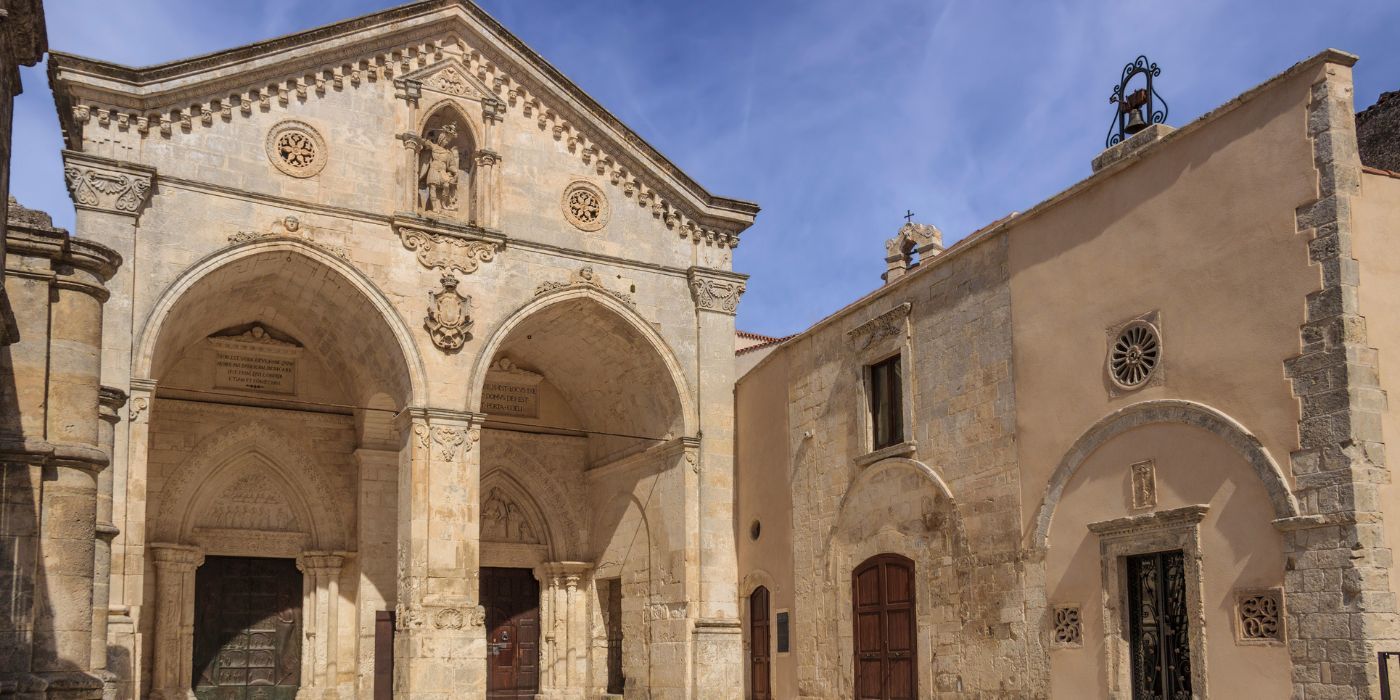

Flavia Cantini
A sacred place where history meets legend: discover the Italian church said to be consecrated by an angel.